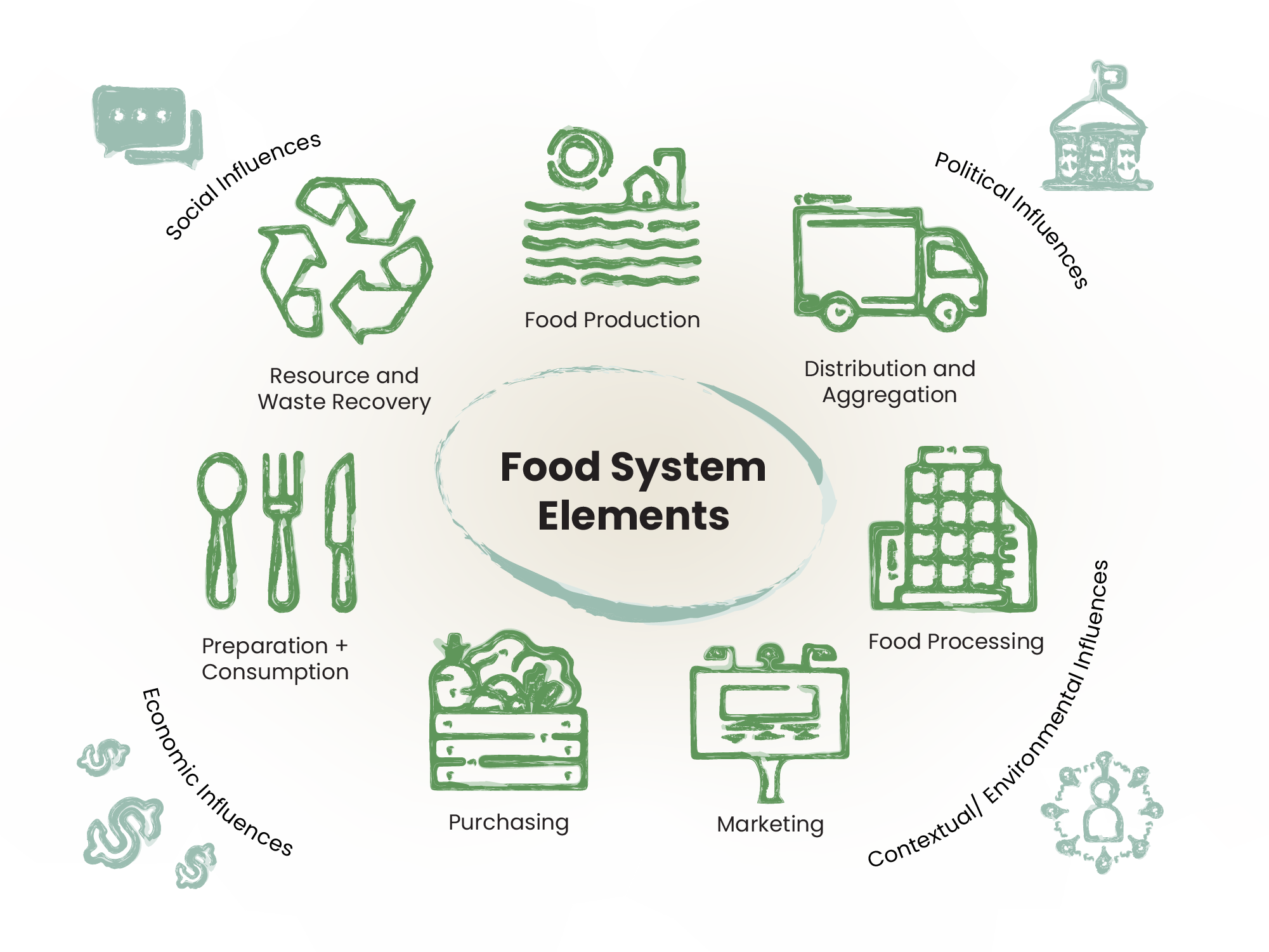
What is a Local Food System?
So close you can almost taste it!
What does “Local” mean?
The term ‘local’ in local food commonly refers to the geographic environment where food is produced, processed, sold and consumed. Because local food systems are place-specific, they merge the production, distribution and consumption of foods with community networks.
A Food System comprises all of the aspects of food production and food distribution.
Food production includes growing, harvesting, and processing. Food distribution includes transporting and delivering, as well as marketing, purchasing, consumption, and resource and waste recovery.
There are two ways this system facilitates your access to local food.
Directly
Farmers’ markets are a prime example. Farmers and other food producers sell directly to you. The same goes for Community Supported Agriculture (CSAs), in which consumers receive regular shares of a farm’s harvest. Pick-your-own farms and roadside stands also fall into this category.
Through Markets
Many restaurants, retailers and institutions also want to buy from local food producers. Businesses such as food hubs and distributors facilitate these relationships so that producers can focus on what they do best: making delicious food.
If you’ve ever bought local food at a grocery store, shopped at a farmers’ market, or bitten into a North Carolina-grown peach, you’re already part of a Local Food System. And we’re working to ensure that that system continues to thrive and includes everyone in your community.


